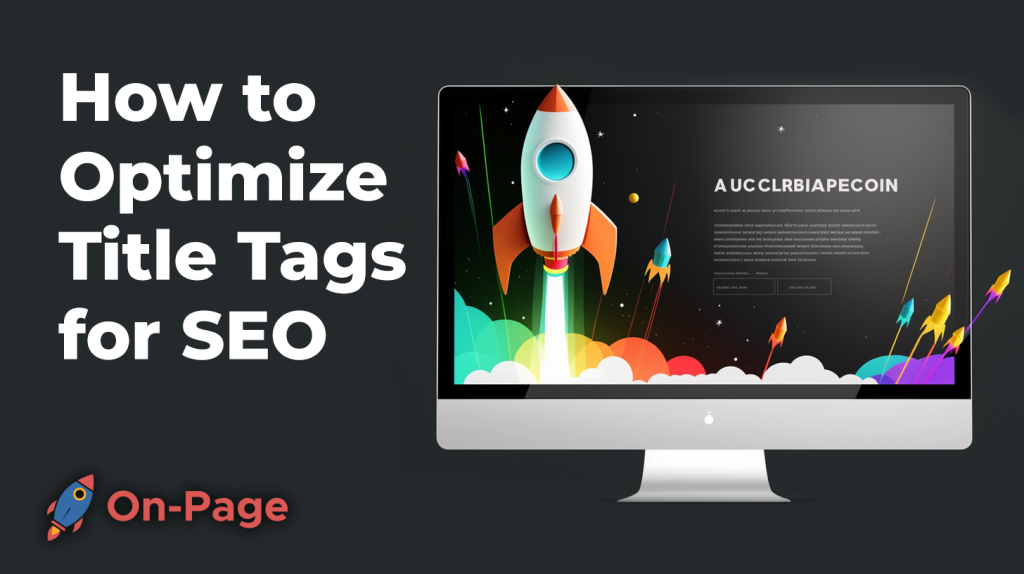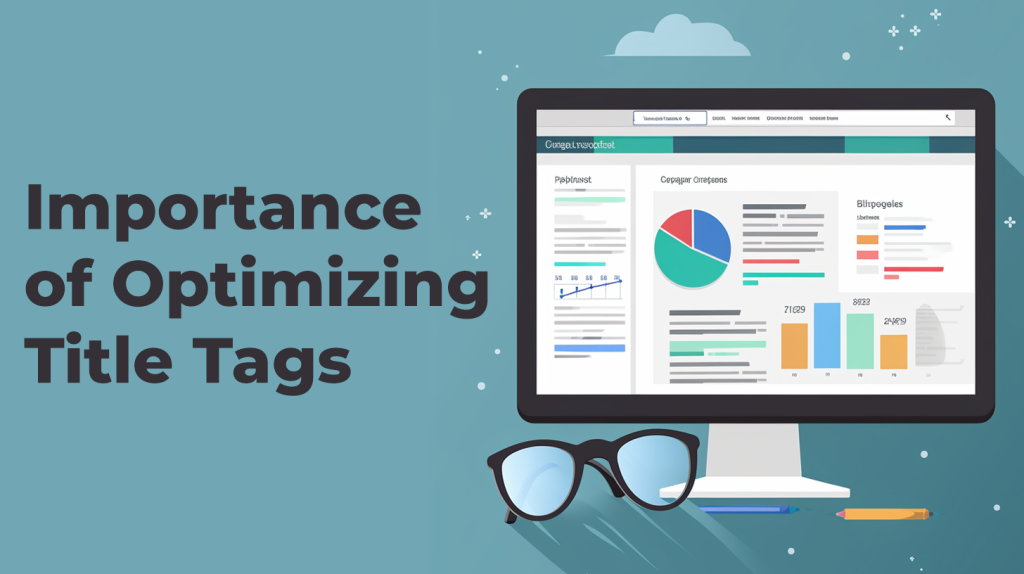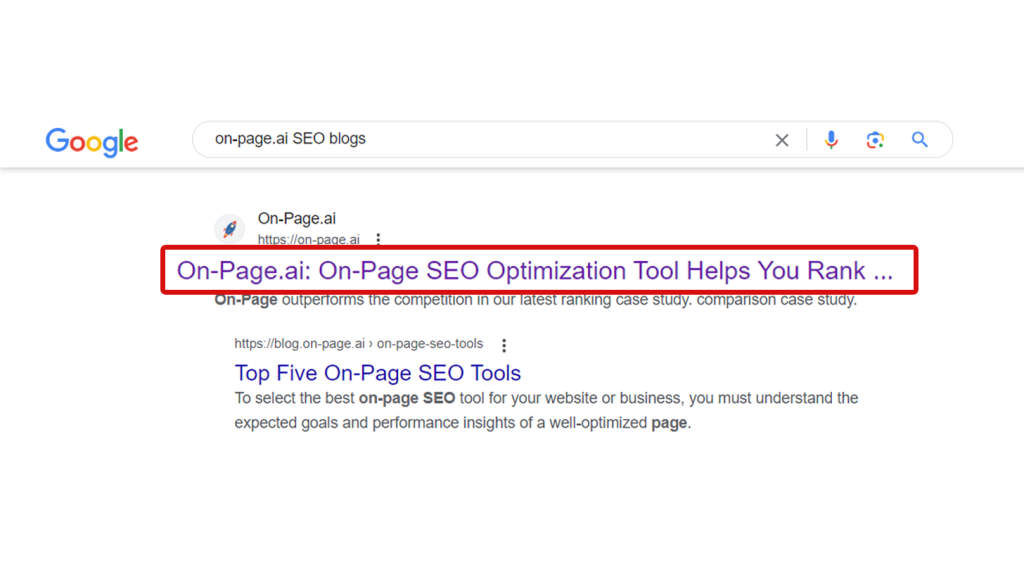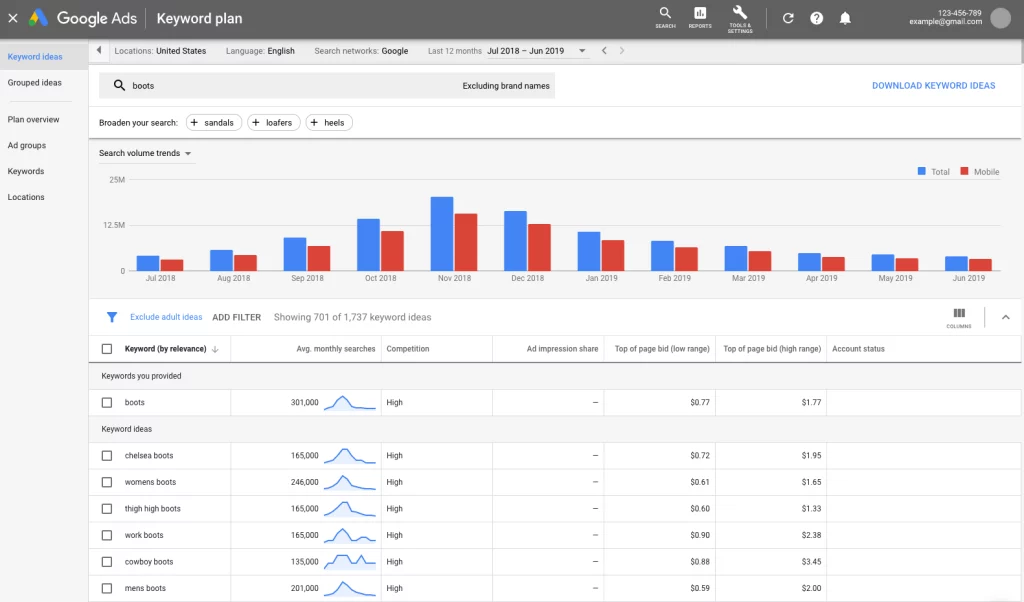
Picture this: You’ve spent countless hours perfecting your content, but it’s like shouting into a void–no one is clicking on your masterpiece. Why? It’s all because of an often-overlooked element in the SEO game – the title tag. In this guide, we will reveal the top strategies to optimize your title tags for SEO and transform your website into an irresistible magnet for organic traffic. Get ready to see mind-blowing results and propel yourself to the first page of search engine rankings!
To optimize your title tags for SEO, it’s important to include targeted keywords and phrases while still keeping the title readable and compelling to users. Keep title tags concise, ideally between 50-60 characters, and make sure each page has a unique title tag that accurately reflects its content. Avoid keyword stuffing or duplicating title tags across multiple pages. Lastly, ensure your title tag provides a clear understanding of the page’s topic to both search engines and human users alike.
Understanding Title Tags for SEO
Title tags are one of the most important on-page ranking factors that search engines use to understand and rank webpages. A title tag, also known as a meta title, is an HTML element that defines the title of a webpage. It appears as the clickable link in search engine results pages (SERPs) and browser tabs.
Think of a title tag as a headline or book title that accurately describes the content of the webpage. Just like how a catchy book title can entice readers to pick up a book, an informative and compelling title tag can attract clicks from potential visitors to your website.
However, some people argue that title tags no longer matter for SEO and have questioned their significance. While it may be true that Google has become better at understanding website content without relying solely on metadata, including title tags, they are still an important on-page factor that can impact click-through rates (CTR) and improve relevance signals to search engines.
According to Google’s Best Practices for Influencing Title Links, accurate and concise titles effectively communicate the subject matter of the page to users and search engines and titles should be descriptive and give users a quick insight into what the page is about. This means that having a well-optimized title tag can improve user experience by showcasing what your page is about, leading to higher CTRs and lower bounce rates.
- Based on a Moz study, the ideal length of a title tag should be from 50 to 60 characters, as it found that Google typically displays around just 50-60 characters in its search results.
- According to HubSpot’s research, properly optimized title tags containing target keywords can improve click-through rates.
To fully understand why optimizing your title tags is important, let’s take a closer look at what you should consider when crafting an effective structure.
Importance of Optimizing Title Tags

Optimizing your website’s title tags not only helps search engines understand what your webpage content is about but also communicates its relevance to potential visitors. By incorporating relevant keywords into your titles and ensuring clarity and readability, you can improve the user experience and increase the likelihood of appearing higher in SERPs.
Let’s say you’re a small business owner who sells organic skincare products. If your homepage title tag is simply “Home,” it doesn’t provide any descriptive information to a potential customer searching for organic skincare products. However, if your title tag is optimized with keywords such as “Organic Skincare Products – Natural Beauty Solutions,” it becomes more likely that your website will appear higher in search results when someone searches for those specific terms.
Another way to think of optimizing your title tags is like dressing up a storefront with an engaging window display. Just like how a compelling display can attract customers to a physical store, optimizing your title tags can attract clicks to your website.
According to Moz, title tags are still one of the most important on-page SEO elements that impact search engine ranking. A well-crafted title tag can communicate relevance signals to search engines, improving the likelihood of ranking higher in SERPs.
However, it is important to note that solely optimizing title tags will not lead to significant changes in rankings. Other on-page elements such as high-quality content and meta descriptions also play crucial roles in overall SEO strategy.
Now that we understand the importance of optimizing title tags, let’s dive into how you can craft an effective structure.
Crafting an Effective Title Tag Structure
Crafting an effective title tag structure is crucial when it comes to optimizing for SEO. The title tag is the first thing that users see on the search engine results page (SERP) and sets the stage for what they can expect to find on the webpage. A well-crafted title tag can significantly increase click-through rates, which in turn can improve your website’s ranking on Google. Here are some strategies you can use to create an effective title tag structure.

First and foremost, keep your titles brief and to the point. The ideal length for a title tag is between 50-60 characters, including spaces. This ensures that your entire title appears on the SERP and isn’t truncated due to excessive length. You don’t want to lose out on potential clicks because users can’t see your full title!
Along with brevity, clarity and readability also play a vital role in crafting effective title tags. Avoid using technical jargon or overly complex language that may confuse or intimidate users. Instead, use simple language that is easy to understand. Organizing your titles with numerals or bullet points will make them more scannable.
Some argue that adding branding or company names to the beginning of a title tag is ineffective since it takes up valuable space where more relevant keywords could be placed. Others argue that branding should be included, as it helps to build brand awareness and establish credibility with users. Ultimately, whether or not branding should be included depends on the specific needs of your website.
Now that we’ve covered the basics of creating an effective title tag structure let’s dive into the importance of using relevant keywords.
Using Relevant Keywords
Keywords form the foundation of every successful SEO strategy, and their impact on title tags cannot be overstated. Using relevant keywords in your title tag improves your website’s visibility on Google and helps to establish subject-matter relevance. Here are some strategies for using relevant keywords in your title tags.
Begin by conducting comprehensive keyword research to identify the keywords and phrases that users search for when seeking content related to your website. Use this research to choose primary, secondary, and tertiary keywords that accurately describe what your webpage is about. Tools like On-Page.ai’s topical keyword search should help with this task.

It’s important to keep in mind that search engines also use algorithms like latent semantic indexing (LSI) to understand the context of your content. This means that you should include semantically-related keywords in your title tags, as well as synonyms and variations of your primary keywords.
Some argue that over-optimization by including too many keywords can have a negative impact on rankings since it can be interpreted as spammy or manipulative. Others argue that effective use of meta descriptions and H1 tags can balance this out, making it a non-issue. It’s important to strike a delicate balance between keyword optimization and natural language flow.
Now that we’ve explored strategies for crafting an effective title tag structure and using relevant keywords within those titles let’s move on to the step-by-step guide for optimizing your title tags.
Ensuring Clarity and Readability
As we have discussed earlier, title tags are crucial for SEO. They provide a clear idea of what the page is about and entice users to click on your link. However, merely inserting relevant keywords into your title tag isn’t enough. You should also ensure that your title tag has clarity and readability.
Let’s take an example of two different title tags:
Title Tag A: Best Electric Guitars Under $1000
Title Tag B: The Top 10 Electric Guitars That Sound Amazing and Cost Less Than $1000
While both title tags include the same keyword, Title Tag B has more clarity and readability. It has additional information that provides a clear picture of the content on the webpage. Users are more likely to click on this link as it gives them more details about what they can expect on the page.
Apart from search engines, users should always be at the forefront when writing title tags. They should accurately reflect the content on your page while providing value to users. This way, not only will you rank higher in SERPs but also increase click-through rates, which is imperative for any successful digital strategy.
Some may argue that one should focus solely on stuffing their title tag with relevant keywords to rank higher in SERPs rather than focusing on readability. While there may be some truth to that argument, it’s important to remember that overcrowded and unreadable titles can turn off users from clicking on your webpage entirely.
Step-by-Step Guide to Optimize Title Tags
Now that we’ve understand how vital it is to craft an effective title tag structure let us delve into a step-by-step guide to optimizing title tags.
First and foremost, conduct careful keyword research. It’s essential to identify the proper keywords to target in your title tag. Google Keyword Planner is a helpful tool that allows you to measure the search volume and competition level of your chosen keywords.

For instance, if your webpage is about weight loss tips for beginners, you can use Google Keyword Planner to identify the top-ranked search phrases related to weight loss, such as “weight loss for beginners,” “how to lose weight,” and “weight loss techniques.”
Once you’ve selected your keyword phrase(s), ensure you put them as close as possible to the beginning of your title tag. Remember to keep it concise; too many words may dilute its meaning and give users no reason to click on it.
For example, “Effective Weight Loss Tips for Beginners” is an excellent example of an appealing title tag since it has both targeted keywords and readability.
It’s important to note that while targeted keywords are vital, they’re not everything! It’s crucial that we avoid stuffing our title tags with keywords when optimization is concerned. Overcrowding can negatively impact readability and make your page appear spammy.
A poorly optimized title tag with too many keywords: “Weight Loss Techniques | How To Lose Weight | Effective Weight Loss Plan – Beginner’s Guide.” Though stuffed with relevant keywords, this fetches no value for the reader beyond creating a buzz of ambiguity.
Finally, consider conducting A/B testing with different variations of your title tag structure. This helps in deciding what works best for your content strategy by comparing engagement rates across different samples.
Monitoring and Adjusting Title Tags

Once you have optimized your title tags, it’s important to monitor their performance and make adjustments as needed. The goal of title tag optimization is to improve your website’s ranking on search engine results pages, increase click-through rates, and ultimately drive more traffic to your site. However, even the best-laid plans may need some fine-tuning along the way.
One way to monitor title tags is to use Google Search Console. This tool allows you to see how often your site appears in search results, how many clicks it receives, and your average position in search results. You can also see which queries are driving traffic to your site and which pages are getting the most clicks. By regularly checking this data, you can ensure that your title tags are performing well and adjust them if necessary.
Another method for monitoring title tags is to conduct A/B testing. This involves creating two versions of a page with different title tags and tracking which version performs better in terms of rankings and click-through rates. By analyzing the data from these tests, you can identify which version is more effective and make changes accordingly.
Some argue that constantly changing title tags can actually harm SEO efforts because it disrupts the consistency of the site’s content. While this may be true if done recklessly, it’s also important to recognize that online trends change quickly, so optimizing your title tags should be an ongoing effort.
Think of optimizing title tags like tuning a guitar – initially, it may take some time to get everything in tune, but even after you’ve done so, you’ll still need to make small adjustments over time as strings loosen or tighten.
So now that we understand the importance of monitoring and adjusting our title tags, let’s move on to exploring how we can measure their impact.
Measuring the Impact of Optimized Title Tags

Measuring the impact of your optimized title tags is crucial for determining whether your efforts are paying off. There are several metrics you can use to evaluate the effectiveness of your title tags and make adjustments as needed.
One metric is organic search traffic. By tracking changes in organic search traffic after implementing new title tags, you can determine whether they are positively or negatively impacting your site’s ranking. For example, if you notice a significant drop in traffic after making changes, it may be a sign that you need to adjust your title tags again.
Another metric is click-through rate (CTR). By examining how many clicks your site receives from search engine results pages (SERPs), you can determine whether your title tags are effectively conveying what’s on your page. If users aren’t clicking on your link, it may be an indication that something isn’t quite right with your title tag.
However, it’s important to recognize that click-through rate isn’t always the most reliable metric for measuring the success of title tags. Sometimes, users may not click on a link simply because they found what they were looking for directly in the search engine result snippet. In other cases, they may have already seen the same content multiple times and didn’t feel like clicking yet again.
Think of measuring the success of title tags like measuring the success of a fishing lure – just because a fish doesn’t bite once doesn’t mean the lure is necessarily ineffective; there could be several underlying factors at play.
Overall, optimizing and monitoring your title tags should be an ongoing effort that involves constantly evaluating their impact and making adjustments as needed. By doing so, you can improve your website’s relevance and visibility, and ultimately drive more traffic to your site. With tools like On-Page.ai and its Stealth AI Writer, On-Page Tool, and Content Editor features, you can formulate a smarter SEO strategy for your business.

Frequently Asked Questions
Is there a specific format for writing title tags preferred by search engines?
Yes, the format should include the primary keyword at the beginning of the tag, followed by a secondary keyword and then the brand name.
According to a study conducted by Moz, using the primary keyword at the beginning of the title tag can improve search engine rankings. They found that pages with keyword-rich titles rank better than those without them. Additionally, including a secondary keyword in the title tag can help to provide additional context for search engines and users.
However, it’s important to keep in mind that title tags shouldn’t be overstuffed with keywords as this could lead to a penalty from search engines for “keyword stuffing.” A good rule of thumb is to keep the length of title tags between 50-60 characters.
In summary, while there isn’t necessarily one specific format that will guarantee higher rankings, following best practices such as including relevant keywords in a natural way and keeping within character limits can help optimize your title tags for SEO.
Does the order of words in a title tag impact its effectiveness for SEO?
Yes, the order of words in a title tag can impact its effectiveness for SEO. This means that if you’re trying to optimize for a specific keyword or phrase, it’s best to include it at the beginning of your title tag.
However, it’s also important to consider the overall user experience when crafting your title tag. While including your targeted keywords is crucial, you also want to make sure the title is concise, descriptive, and appealing to human readers. A catchy and well-crafted title tag can help increase click-through rates and ultimately drive more traffic to your website.
In summary, while the order of words in a title tag does impact its effectiveness for SEO, it’s important to find a balance between optimizing for search engines and providing value for users.
What is the ideal length for a title tag in terms of SEO?
The ideal length for a title tag in terms of SEO is between 50 and 60 characters. This is because search engines, such as Google, usually display up to 60 characters of a title tag in their SERPs. In other words, if your title tag is too long, it will get cut off with an ellipsis, which can affect the readability and clickability of your listing.
Moreover, studies have shown that shorter title tags tend to perform better in terms of CTRs compared to longer ones. According to Backlinko’s analysis of over 4 million Google search results, title tags with 15-40 characters had the highest CTRs on average.
That being said, it’s not always necessary to stick to exactly 50-60 characters. If you have a compelling reason to include more characters in your title tag, such as adding a branding phrase or a specific keyword for targeting, then go for it. Just make sure that your most important information and keywords are included within the first 60 characters.
Are there any common mistakes to avoid when optimizing title tags for SEO?
Yes, there are indeed some common mistakes to avoid when optimizing title tags for SEO. Here are a few:
1. Stuffing keywords: Overloading your title tags with keywords used to be a common practice in the past. However, it is now frowned upon by search engines as it looks spammy and hurts user experience.
2. Being too vague or generic: Your title tags should be specific and descriptive enough to give searchers an idea of what they can expect when clicking through to your website. Being too vague or generic will not entice users to click.
3. Ignoring character limits: Google typically displays up to 60 characters for title tags before truncating them, so it’s important to keep your titles concise yet informative.
4. Duplicate title tags: Having multiple pages with the same title tag can confuse both users and search engines. Aim for unique and relevant title tags for each page on your website.
Avoiding these mistakes can help increase the visibility of your website on SERPs and drive more organic traffic.
How can incorporating keywords into a title tag improve SEO?
Incorporating keywords into a title tag is one of the most fundamental SEO practices. A title tag is an HTML element that specifies the title of a web page. It is one of the most critical components for search engine optimization and plays a significant role in improving website ranking on SERPs.
Including target keywords or phrases in your title tag can improve your website’s SEO by informing search engines about the content of that page, making it easier for them to match user search queries with relevant content. This helps increase organic traffic and click-through rates.
Using relevant targeted keywords in your title tags also helps attract users’ attention and helps improve CTR from SERPs. A high CTR indicates that users find your content relevant, which can lead to more engagement and better search engine rankings over time.
Therefore, incorporating keywords into your title tag is essential for any SEO strategy. It is important to ensure that your title tags are unique, informative, and reflective of the content on your website. Doing so will help you boost your website’s visibility on SERPs and attract more traffic to your site.




